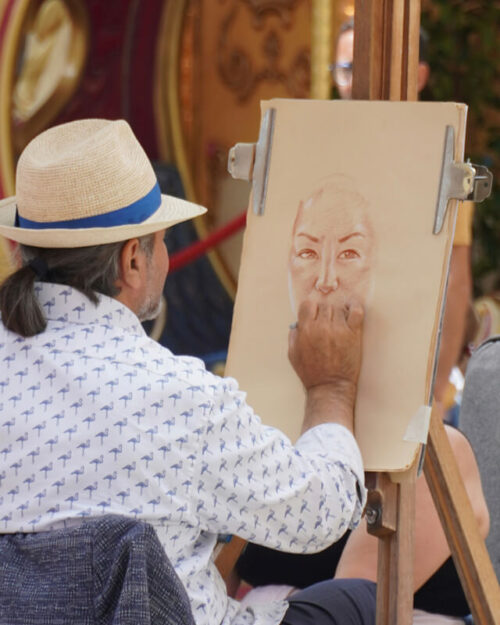Cleaning brushes can sometimes be hard work, but it is essential to do it meticulously in order to keep your tools performing well and prolong the life of those precious brushes.
Why should you do this? Leaving paint residue on brushes will harden their bristles
Once you’ve found the brand and range that suits you best, why neglect them?
Over the years, we have learned from the experiences of all the artists who have trusted Blockx and from our know-how, and now share with you all our tips for cleaning your brushes without damaging them.
The first parameter to take into account is the nature of the paint used. Indeed, once the brush has been used, it is no longer the nature of the brush hair that counts but the paint used.
Oil painting: how to proceed?
Step 1:
Wring out your brushes by tapping them on cardboard, paper or the edge of a bucket to remove excess paint
Step 2:
Take our petroleum spirit with you, which will be your best ally for cleaning the applicators.
Fill a container with it (white spirit) and leave your brushes to soak for several hours in the container, making sure that the brushes are generously covered with the product.
Step 3:
Run them under tap water and then rub them gently over bar of Marseille soap
Step number 4:
Rub the brushes between your hands and then rinse them with clean water
Last step:
Place all your brushes on a flat towel (preferably microfiber for faster and more effective absorption) and let them air dry.
Watercolour and gouache painting: step by step
Watercolour paint is a water-based paint: it has the advantage of being less aggressive for the brushes than oil or acrylic paint, but they still need to be cleaned after each use, especially as they are extremely fragile.
Here’s how to clean them:
Step number 1:
Rinse the brush tuft in a container of clean water, being careful not to crush it to the bottom of the jar. Crushing the brush to clean it will pull the brush bristles apart and weaken their hold.
Step 2:
Shake the brush vigorously to remove excess water
Step number 3:
Put all the bristles back in place by gently smoothing the brush tuft between your thumb and forefinger. If your brush is perfectly clean, you will not have any colour left on your fingers. If it is, wet your brush, apply artist’s soap to the tuft, lather it until the soap penetrates well to the root of the ferrule and rinse with water.
Step 4:
Get a terry towel or paper towel and lay your brushes flat and horizontal so that water cannot seep into the ferrule and warp the wood handle.
Storage tip:
Store your brushes with the tuft facing upwards to avoid damaging them.
To keep their bristles supple, wrap them in a plastic bag or in an airtight bag that you form. The air circulation is responsible for the drying of the brushes.
Discover our 72 shades of watercolours, our 86 shades of extra-fine oils and let your imagination run wild.
At Blockx, the beauty of the gesture and the intensity of the colour are the key words of the mission that has been driving us for over 150 years.



